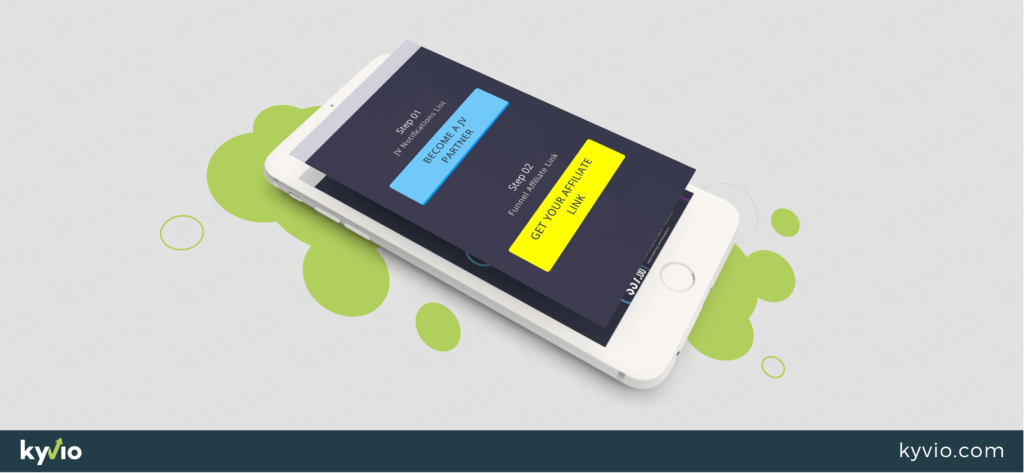Kyvio Blog

How to Make your Business Mobile Ready in 2018 and Beyond
Note: This post has been updated for 2019 with relevant links, data and tools.
With 2020 – beginning of a new decade – around the corner, we have put together an essential guide to help you optimize your business for mobile users. Some of the factors that we are going to look at are:
AMP Websites
Mobile Optimised Websites
Using Push Notifications
Why get mobile ready?
Mobile is now everywhere; you can link to the official website or intranet from home, jump into meetings via Skype from any location and even email colleagues whilst waiting in the car. The game has changed in a huge way. For your business to keep up with the competition and add value in the market, you need to be up-to-date when it comes to the latest technology. Failure to keep up will only damage your image and the impression that you give to customers.
Mobile is bringing businesses closer to their customers 24/7 in ways that we could not have even imagined a few years ago. In order to be up there with the big boys (and the little ones) in 2019, make sure that your business has upgraded its systems and become totally mobile savvy, particularly with regard to the following:
AMP (Accelerated Mobile Pages) Websites
This is all about speed and providing websites for your customers that are fast and high performing across every type of device, including mobile. Based upon HTML, its very lightweight and loads fast, ensuring that your website’s users always have a great experience, no matter where they are accessing your site from.
Gone are the days when viewers would put up with websites taking ages to load on their mobile phone; if your site is not super speedy, you will soon find yourself saying goodbye to customers who will soon be looking elsewhere for sites that they can readily access when on the move.
Progressive Web Apps
Here we have a combination of the best of apps and the best of the web. Users don’t need to install anything. Instead, the more they use the app over time, the more powerful and progressive it becomes. It will load quickly and work well for every user, no matter their choice of browser. As well as being progressive, it is also:
Responsive – it will work on any type of device; mobile, tablet or desktop
Connectivity independent – able to work offline if network quality is poor
App-like – it feels and behaves like an app
Always up-to-date – due to the built-in update process
Safe – HTTPS prevents content from being tampered with
Discoverable – presents itself as an app, meaning search engines recognize it
Re-engageable – push notifications make re-engagement far easier
Installable – users love them because they can add the app to their home screen without having to bother going through an app store.
Linkable – users can share the app through its URL so forget about complex installations
Mobile Optimized websites

When your site has this, it means that when visitors access your site, from any type of mobile device, they will experience a great visit as your site will have been optimized.
This means that whatever their screen size or load time, the optimization process will take account of everything, including site structure, page speed, including site design etc.
This way your mobile visitors are not likely to look elsewhere due to unnecessary frustrations that make them head off your site and in another direction.
If you have already done some of the hard work and your site is already optimized for search engines, there are just a few other things that you ought to check out (or get your web designer to look at for you):
Page speed – this is vital for mobile users due to things like hardware and connectivity issues. Get things up to speed by leveraging browser caching, reducing redirects and minifying code.
Don’t block CSS, JavaScript or images. Now that mobile devices can cope with these elements, you don’t need to hide them. They are now essential for Google to know whether or not you have a responsive site.
Don’t use Flash – if the plugin is not available to your user on their phone they will miss out; use HTML5 instead.
Don’t use pop-ups – these may not close on a mobile resulting in a higher than usual bounce rate.
Design for bigger fingers – if the touchscreen is to be used, make the buttons large enough to prevent accidental clicks.
Optimize titles/meta descriptions – users on mobiles will have less screen space so be concise when it comes to titles etc.
Use Schema.org structured data. Because of the smaller screen, a search that comes up with snippets will stand out more than when shown on a desktop.
Optimize for local search – include your contact data in your site metadata.
Mobile site configuration – and finally, decide which to use; dynamic serving, responsive or separate site configuration.
Using Push Notifications
A push notification or message will pop up on a mobile device when sent by the publisher of the app.
They can be incredibly useful by showing latest information, asking users to take action or notify an event. Looking like a text message, users will only receive it when they install the app. IOS, Android, Fire OS, Windows and BlackBerry all have their own services.
App publishers make use of these push notifications to communicate with users. And because they don’t get lost in inboxes or filtered by a spam filter, users are far more likely to take notice.
For this reason, they are a great way for you to promote products, send information and a variety of other uses.
Building Mobile Responsive Pages With Kyvio

Kyvio has a great page builder/editor in the funnel building section. What sets it apart though, from other web page builders, is our mobile editor.
You can simply switch the editing mode in desktop or mobile with a click of a button. The responsiveness on Kyvio’s mobile pages is outstanding. The home page is built in kyvio and all of the other pages are super responsive on mobile and scale unlike anything else out there.
So there you are; your mobile ready action plan for 2019. Start looking at what you need to do now so that when the New Year hits, you’re not left behind.
Author Bio:
Izaak Crook is a Digital Marketing Executive for AppInstitute, a SaaS App Builder platform that allows anyone to create their own iOS and Android app without writing a single line of code.



